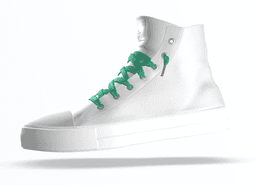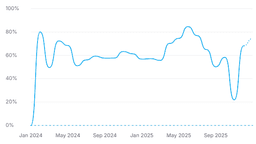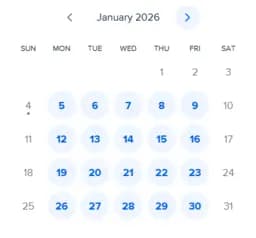What Sets Visual SLAM Apart from SFM?
Visual SLAM excels in real-time applications demanding automatic map generation and self-localization, ideally suited for robotics and autonomous vehicle projects. Conversely, Structure from Motion (SFM) is preferable for high-accuracy 3D structure reconstruction from a set of images, often applied in 3D Scanning and Geographic Information Systems (GIS).

Key Differences Between Visual SLAM and SFM
- Visual SLAM thrives on autonomous systems needing real-time navigation sans preexisting maps, while SFM optimally serves applications requiring precision 3D mapping from 2D images.
- Visual SLAM is predominantly used in AR/VR, autonomous vehicles, robotics, industrial automation, whereas SFM finds usage notably in 3D scanning, visual perception, and geosciences.
- Visual SLAM employs camera sensors to perceive the environment, extract and track features, building and optimizing the map; SFM necessitates additional sensor data or object size for accurate scaling of structure and motion in world units.
- Visual SLAM utilizes features like corners, blobs, unique pixels collection for its computation, while SFM employs techniques like Kanade-Lucas-Tomasi (KLT) algorithm catering to feature matching or tracking between views.
| Comparison | Visual SLAM | Structure from Motion (SFM) |
|---|---|---|
| Basic Principle | Works by tracking visual features in real-time to generate maps and estimate motion | Estimates 3D structures from 2D image sequences coupled with local motion signals |
| Area of Application | Robotics, AR/VR, autonomous vehicles, industrial automation | 3D scanning, AR/VR, visual simultaneous localization and mapping |
| Career Opportunities | Robotics R&D, autonomous vehicle companies, AR/VR startups, and industrial automation | Geosciences, cultural heritage management, structure control and documentation |
| Input Sensor | Primarily uses camera(s) | Images from a camera or a sequence |
| Typical Resolution | VGA (640×480 pixel) | Varies on different applications |
| Error Mitigation | Use of Kalman filters reduces effects of noise and uncertainty | Implements RANSAC algorithm to remove outlier correspondences |
| Complementation | Often used in conjunction with other technologies for enhanced results | Often used in conjunction with Visual SLAM for enhanced results |
What Is Visual SLAM and Who’s It For?
Visual SLAM, or Simultaneous Localization and Mapping, is cutting-edge technology that seamlessly blends Computer Vision, AI, and Robotics. The technology, intended for autonomous systems, enables exploration and navigation without pre-existing maps or external positioning. Extraction of visual features from images, tracking, mapping, loop closure, optimization, and localization characterize a typical Visual SLAM pipeline. It evolved from early 1980s research with breakthroughs in mobile Robotics in the late ’90s. Its applications stretch across robotics, AR, VR, autonomous vehicles, and industrial automation.
This technology is for individuals and companies focused on robotics R&D, autonomous vehicle technologies, AR/VR startups, and industrial automation. Its expanding market, currently valued at $245.1m and expected to hit $1.2bn by 2027, promises compelling career and growth prospects.

Pros of Visual SLAM
- Potential for real-time implementations and expanded capabilities
- Adaptable to multiple applications, from AR to automotive
- High market growth potential, spurred by demand in autonomous vehicles
Cons of Visual SLAM
- Prone to localization errors which can accumulate significantly
- Necessity of specific camera features, including global shutter and grayscale sensor with VGA resolutions
What Is SFM and Who’s It For?
Structure from Motion or SFM is a photogrammetric range imaging technique extrapolating 3D structures from 2D image sequences, often coupled with local motion signals. Rooted in computer vision and visual perception fields, SFM enables recovery of 3D structure from a projected 2D motion field. Its versatility finds it employed across applications such as 3D scanning, AR, vSLAM, robotics, and autonomous driving.
The technology lends itself well to institutions, professionals, and stakeholders in geosciences, cultural heritage management, and any field calling for 3D surveying and model creation of hyperscale landforms, structures, and environments.

Pros of SFM
- Capable of estimating 3D structures from 2D image sequences
- Non-invasive, highly flexible, low-cost method for surveying various environments
- Can be combined with other techniques and processes, enhancing flexibility and precision
Cons of SFM
- Precision heavily dependent on matching features or tracking between camera views
- Scale computation requires additional information or sensors, increasing complexity
Code Examples for Visual SLAM & SFM
Visual SLAM
This example demonstrates the initialization of a Visual SLAM system using OpenCV and Python. You’ll need OpenCV and Numpy installed.
import cv2
import numpy as np
# Initialize the ORB detector
orb = cv2.ORB_create()
# Initialize the BFMatcher
bf = cv2.BFMatcher(cv2.NORM_HAMMING, crossCheck=True)
def detect_keypoints(frame):
# Convert the frame to grayscale
grayscale_frame = cv2.cvtColor(frame, cv2.COLOR_BGR2GRAY)
# Detect ORB keypoints
keypoints = orb.detect(grayscale_frame, None)
# Compute descriptors
keypoints, descriptors = orb.compute(grayscale_frame, keypoints)
return keypoints, descriptors
def match_keypoints(descriptors1, descriptors2):
# Match descriptors
matches = bf.match(descriptors1, descriptors2)
# Sort matches by distance
matches = sorted(matches, key = lambda x:x.distance)
return matchesSFM
This example illustrates a simple SFM implementation using Python and OpenCV. Of note, OpenCV, Numpy, and opencv-python are a must-have.
import numpy as np
import cv2
# Fill in the details of your image here:
pts_image1 = np.array([, , ], float)
pts_image2 = np.array([, , ], float)
# Find fundamental matrix F
F, mask = cv2.findFundamentalMat(pts_image1, pts_image2)
# Select only inlier points
pts_image1 = pts_image1
pts_image2 = pts_image2
# Camera matrices
I = np.eye(3)
Z = np.zeros((3,4))
P1 = np.hstack((I,Z))
P2 = np.hstack((I, np.array().reshape(3,1)))
# Triangulate points to find 3D homogenous points in space
points = cv2.triangulatePoints(P1, P2, pts_image1.T, pts_image2.T).T
# Convert to inhomogeneous coordinates
inhomogeneous_points = points[:,:3]/np.repeat(points[:,3], 3).reshape(-1,3)
print(inhomogeneous_points)Visual SLAM or SFM: Which Holds the Key to Your Technological Future?
In the realm of 3D structure perception from 2D imagery, both Visual SLAM and SFM present potent tools. The choice boils down to your specific use cases and long-term vision.
AR/VR Startups
Visual SLAM holds assertive potential for your work. It flawlessly transforms environmental information into maps, vital for your immersive experiences. Its evolving strides shall reflect in unpredictable leaps in your AR/VR application realities.

Autonomous Vehicles Makers
SFM should be your technology of choice. Its ability to gauge motion signals complements your vehicular requirements, and when paired with other sensor data, it can paint an accurate scale computation, instrumental in autonomous driving.

Robotics Research and Development
Robotics teams will find Visual SLAM‘s scope for improvisation conducive. Also, its feature-based algorithms provide an expansive playground for strategizing robot-path planning.

Geoscientists
If you are scaling hyperscale landforms, SFM is your ally. Its non-invasive and flexible method for surveying diverse environments can facilitate model creation for thorough data assessment.

Cultural Heritage Conservators
SFM lends itself to your preservation attempts. It aids in structure control, documentation, estimation, thus nourishing your efforts for safeguarding heritage sites in their eternal glory.

Visual SLAM and SFM: both are robust in their realms, but your mission dictates the choice. While Visual SLAM is a herald for AR/VR solutions and robotics, SFM steals the show in autonomous vehicles, geosciences, and cultural heritage conservation.







